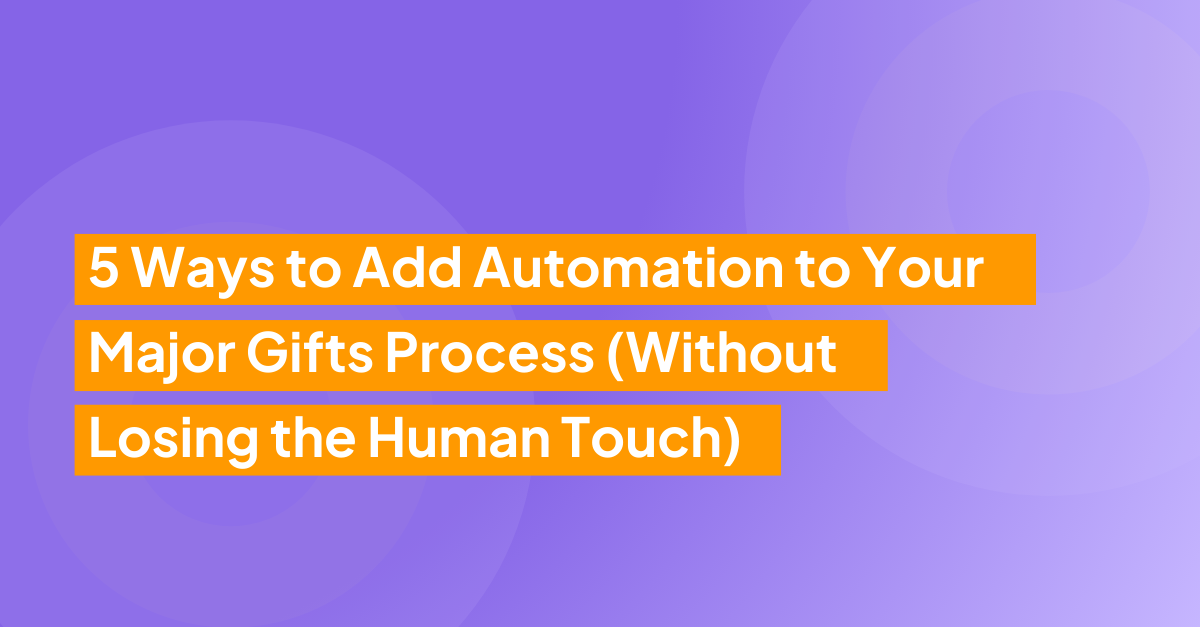Major gift fundraising depends on good data and thorough preparation, but when research eats up hours that could be spent in conversations, opportunities get missed. The challenge for many teams isn’t whether they have the data, it’s whether they can turn that data into insight quickly enough to act.
That’s where automation comes in. New tools like predictive AI and agent-based research can do the desk work in minutes, delivering fresher profiles, cleaner records, and better next steps.
Here are five ways to add automation to your major gifts process.
1) Identify prospects via predictive AI
Wealth screens are helpful, but they miss something crucial: intent. Machine learning models can score donors based on their likelihood to give in the near term and their long-term potential. That means mid-level supporters with strong propensity signals won’t be overlooked.
Prioritizing donors who combine capacity and propensity ensures your pipeline is full of prospects who are both able and ready to give.
2) Automate web-search with agentic AI
Public information like bios, board roles, news, and interviews can take hours to compile into a meaningful report, and then more time to digest before a crucial meeting. Agentic AI can scan sources and return concise summaries of what’s relevant, refreshed on demand. The result is a smoother, more consistent research process, and fundraisers who walk into meetings confident and prepared.
3) Compile reports and flag due-diligence areas
Beyond profiles, automation can highlight risk factors and sensitive issues relevant to your mission. Dynamic briefs can combine biography, interests, connections, giving history, and a due diligence section with potential risk factors. This ensures your organization approaches every prospect with a complete picture and supports stronger relationships while protecting your reputation.
4) Resolve identities (“which John Smith?”)
Duplicate or incomplete records slow down teams and can lead to embarrassing mistakes. AI agents can triangulate employer, location, and affiliations to confirm which record is correct, and return a confidence score. With cleaner records, fundraisers spend less time second-guessing data and more time advancing real opportunities.
5) Turn insights into recommended outreach
Research should lead directly to action. AI can analyze profiles and suggest the next best step, like which program to emphasize, who might provide the warm introduction, or even a draft first-touch email. Turning static research into concrete recommendations creates momentum, moving prospects smoothly from identification to cultivation.
The bottom line
Wealth screening alone is yesterday’s playbook. The smartest major gifts teams are automating qualitative research to prepare for better donor conversations. AI-assisted research (affinity, relevance, recency) is a better predictor of a great conversation, and great conversations lead to great gifts.



.png)

.png)
